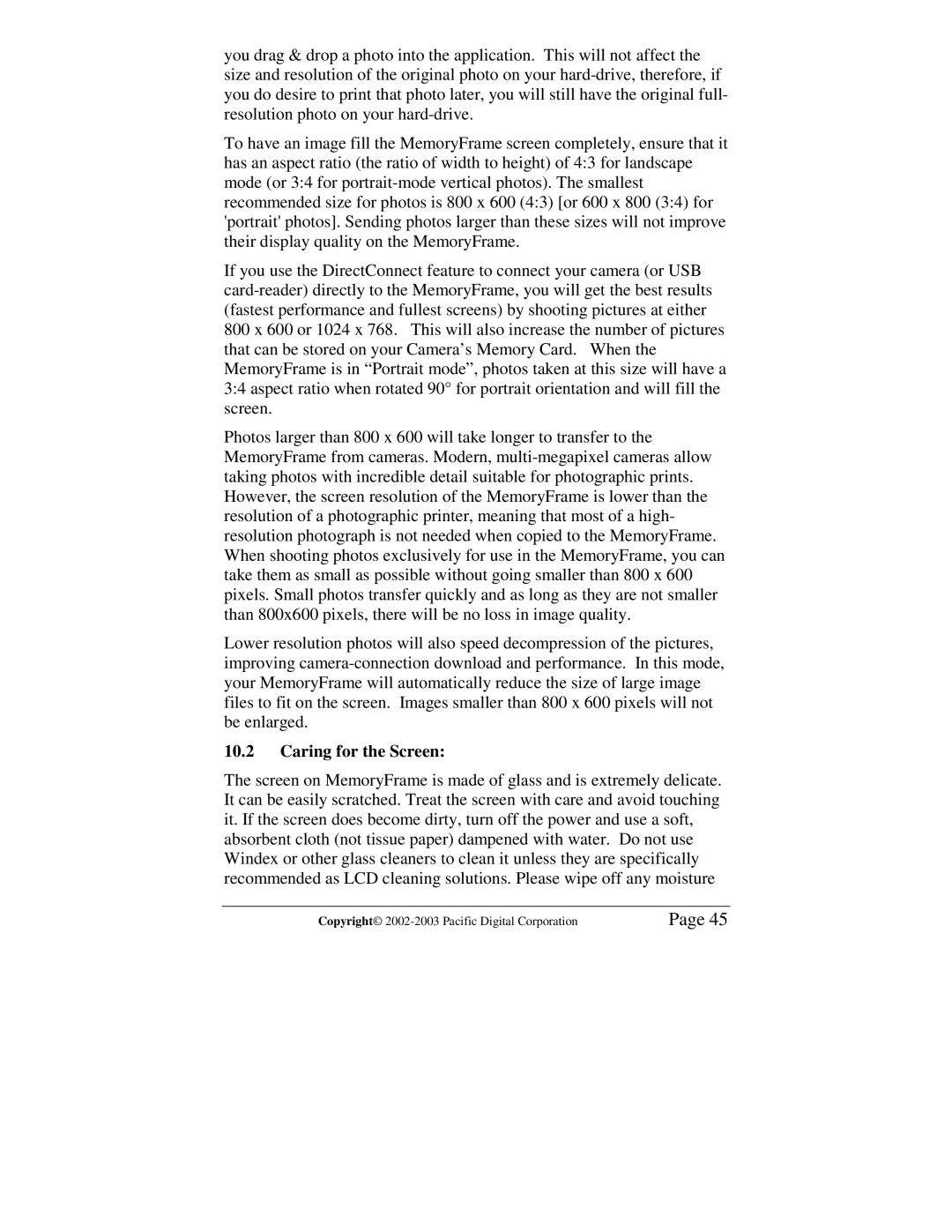you drag & drop a photo into the application. This will not affect the size and resolution of the original photo on your hard-drive, therefore, if you do desire to print that photo later, you will still have the original full- resolution photo on your hard-drive.
To have an image fill the MemoryFrame screen completely, ensure that it has an aspect ratio (the ratio of width to height) of 4:3 for landscape mode (or 3:4 for portrait-mode vertical photos). The smallest recommended size for photos is 800 x 600 (4:3) [or 600 x 800 (3:4) for 'portrait' photos]. Sending photos larger than these sizes will not improve their display quality on the MemoryFrame.
If you use the DirectConnect feature to connect your camera (or USB card-reader) directly to the MemoryFrame, you will get the best results (fastest performance and fullest screens) by shooting pictures at either 800 x 600 or 1024 x 768. This will also increase the number of pictures that can be stored on your Camera’s Memory Card. When the MemoryFrame is in “Portrait mode”, photos taken at this size will have a 3:4 aspect ratio when rotated 90° for portrait orientation and will fill the screen.
Photos larger than 800 x 600 will take longer to transfer to the MemoryFrame from cameras. Modern, multi-megapixel cameras allow taking photos with incredible detail suitable for photographic prints. However, the screen resolution of the MemoryFrame is lower than the resolution of a photographic printer, meaning that most of a high- resolution photograph is not needed when copied to the MemoryFrame. When shooting photos exclusively for use in the MemoryFrame, you can take them as small as possible without going smaller than 800 x 600 pixels. Small photos transfer quickly and as long as they are not smaller than 800x600 pixels, there will be no loss in image quality.
Lower resolution photos will also speed decompression of the pictures, improving camera-connection download and performance. In this mode, your MemoryFrame will automatically reduce the size of large image files to fit on the screen. Images smaller than 800 x 600 pixels will not be enlarged.
10.2Caring for the Screen:
The screen on MemoryFrame is made of glass and is extremely delicate. It can be easily scratched. Treat the screen with care and avoid touching it. If the screen does become dirty, turn off the power and use a soft, absorbent cloth (not tissue paper) dampened with water. Do not use Windex or other glass cleaners to clean it unless they are specifically recommended as LCD cleaning solutions. Please wipe off any moisture
Copyright© 2002-2003 Pacific Digital Corporation | Page 45 |
